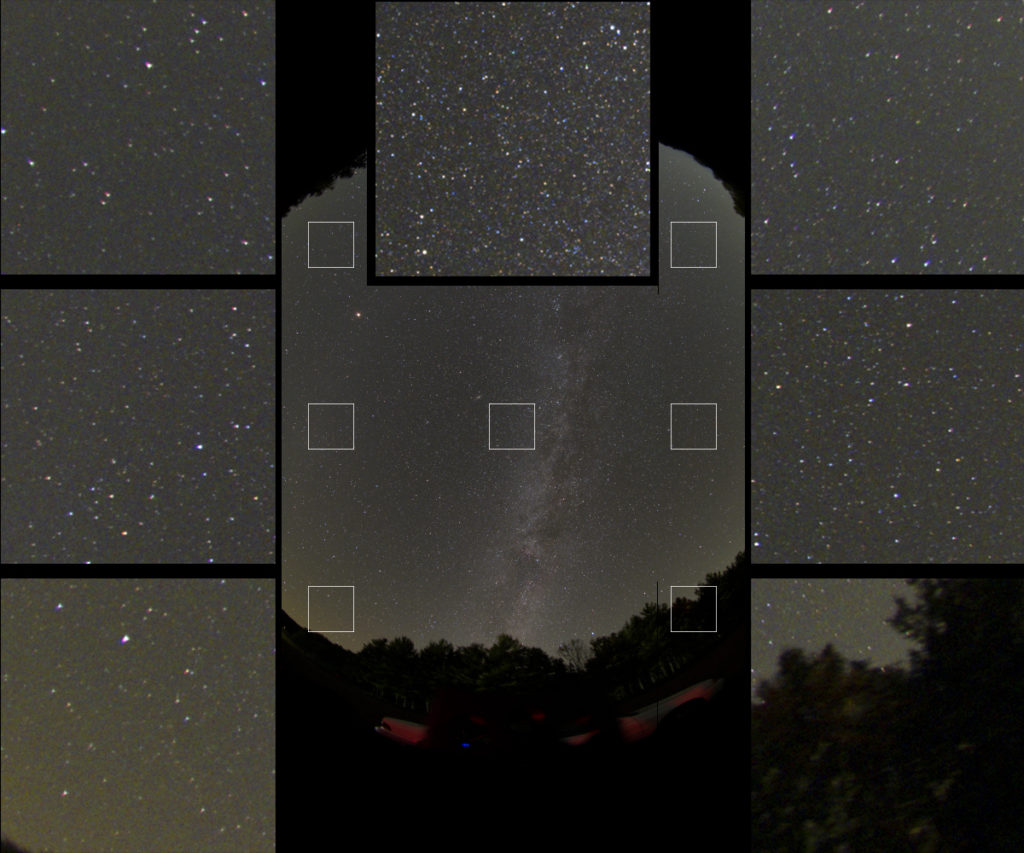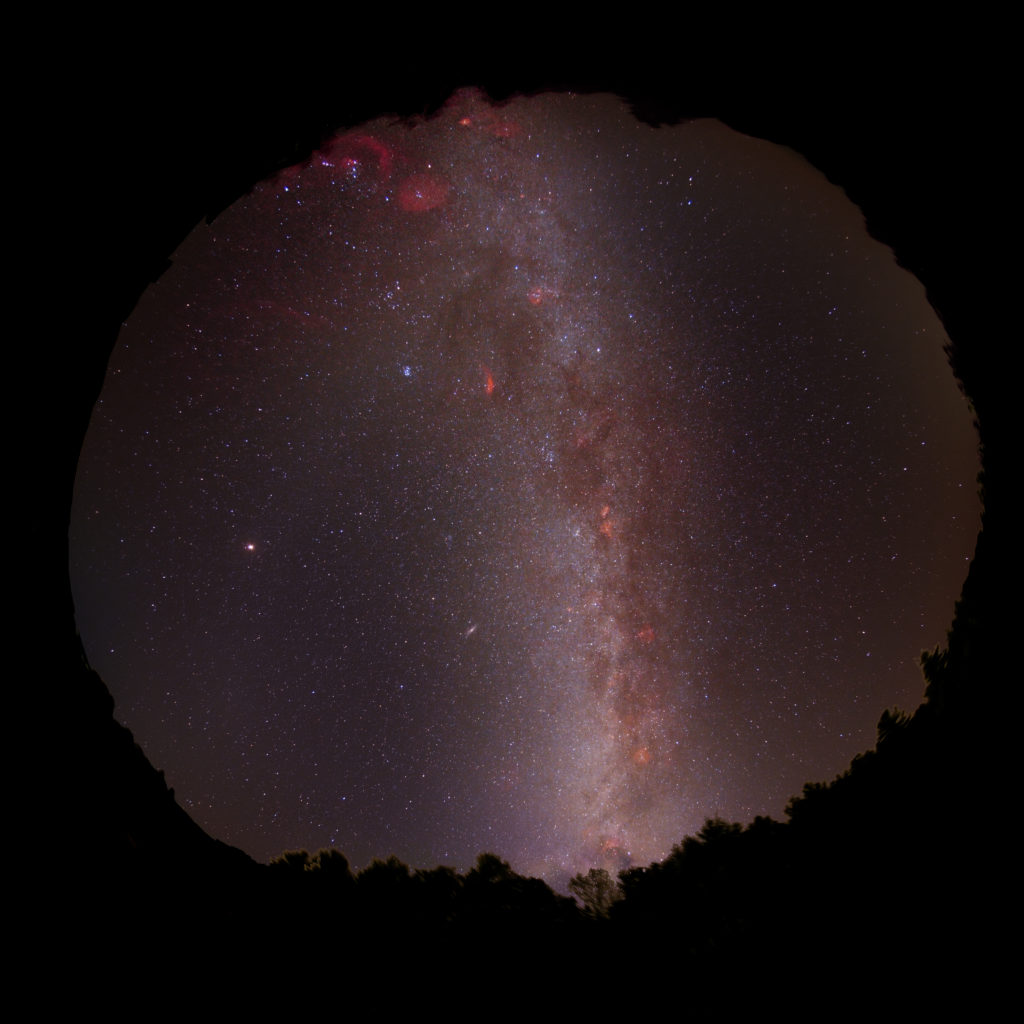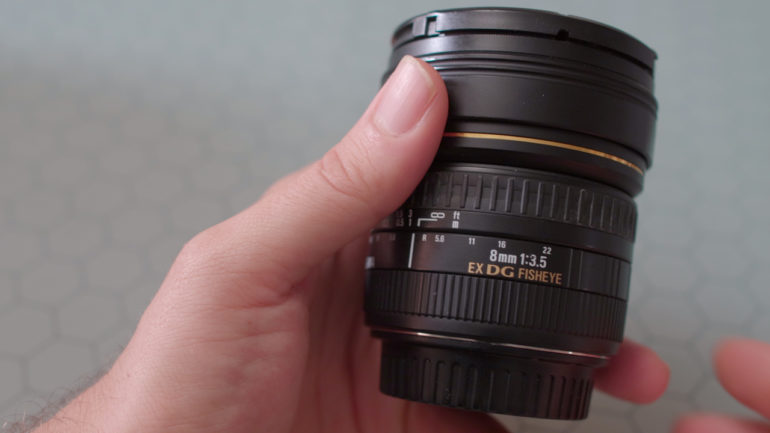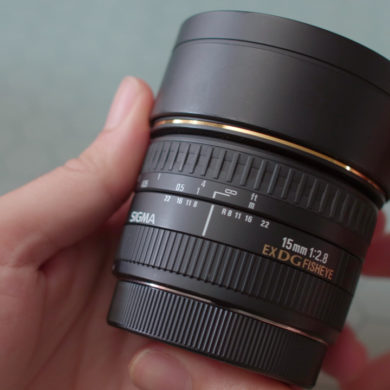Physical Characteristics
- Available Mounts: Canon EF, Nikon F, Sigma SA
- Lens type: Fisheye (Circular 180 degree view on full frame)
- Focus type: Manual or Auto
- Aperture range: f/3.5 – f/16
- Filter size: Insertion-type gelatin filter into rear of the lens
- Dimensions (with caps on): 95mm high, 77mm wide
- Height (from camera front to lens front; caps off): 66mm
- Weight (with caps on): 482g / 1 lb. 1 oz.
- Weight (with caps off): 394g / 14 oz.
- Other: Removable adapter with 72mm threads to hold lens cap or shade
Star Tests

Open full-size image in new tab.




Open full-size image in new tab.


Open full-size image in new tab.

Commentary
This lens is fairly expensive (I bought my copy used for about $500), but it is also the best circular fisheye lens on full-frame that I have found. It has some lateral chromatic abberation that gets worse away from center at all focal ratios. When you get to the very edge of the circular image, the chromatic abberation will appear as nearly full separation of the red and blue channels giving the appearance of double stars at full magnification. Therefore to get a pixel-perfect full dome image, you would want to mosaic. The coma is minimal and stays fairly consistent until about f/5.6 at which point it’s mostly gone. I usually use the lens wide-open at f/3.5, but if you want the dimmer stars to get a bit sharper, you can stop down. Always remove the lens-cap/shade adapter before use. It will interfere with the image, and should not be used to mount filters. There is apparently ways to mount gelatin filters to the back of the lens, but I’ve never tried that. I have used a filter drawer system with Canon EOS Ra to use a duo narrowband filter with the lens, which worked well (see Sample Images below).
Price
$899 USD (December 2020)
Sample Images


